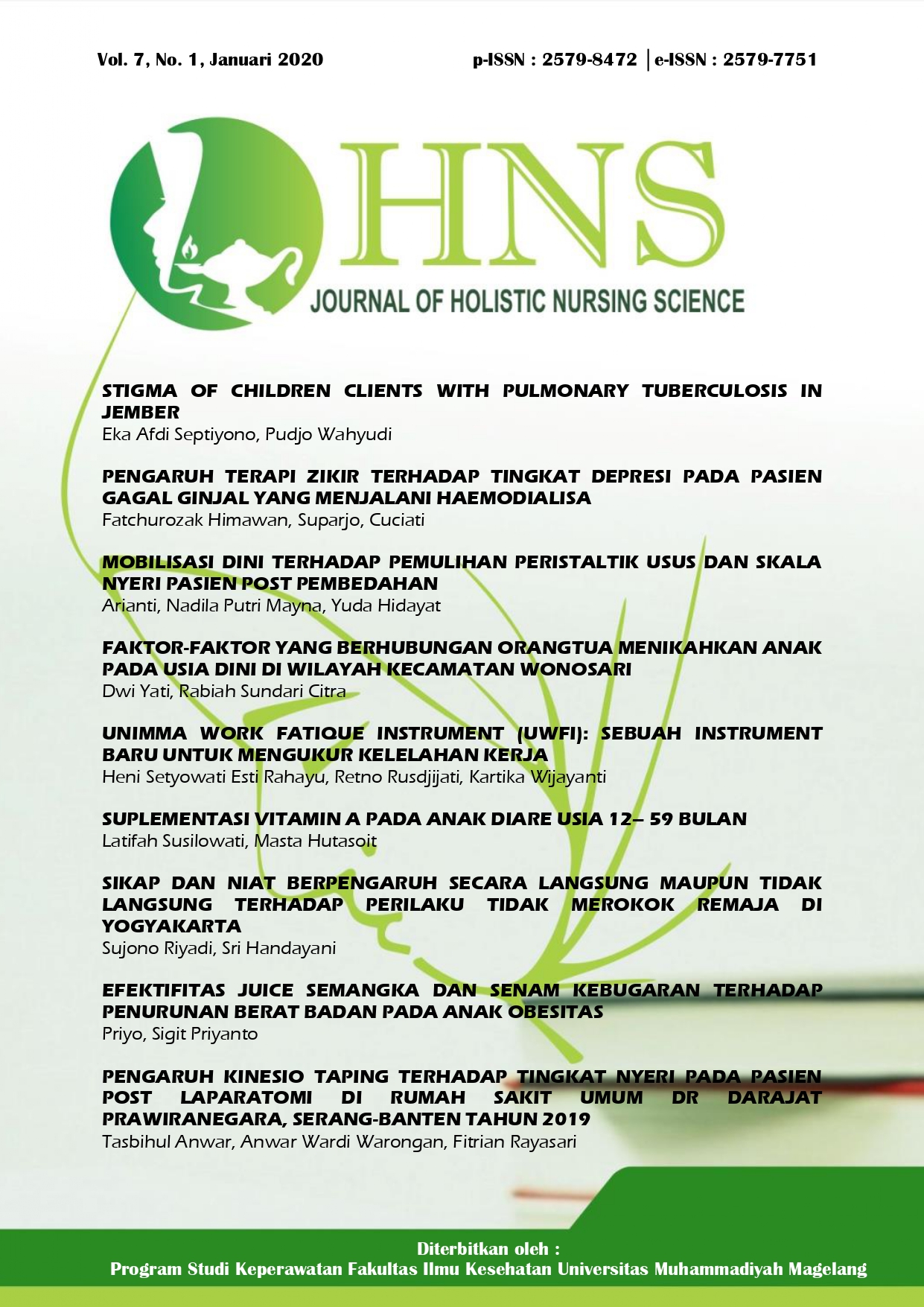PENGARUH KINESIO TAPING TERHADAP TINGKAT NYERI PADA PASIEN POST LAPARATOMI DI RUMAH SAKIT UMUM DR DARAJAT PRAWIRANEGARA, SERANG-BANTEN TAHUN 2019
Main Article Content
Abstract
Laparotomy is one of the major surgeries. Laparotomy is an operative technique that can be performed on digestive and urinary sistem disorders that will cause pain. This study aims to determine thes effects of kinesio taping on the level of pains in post laparotomy patients. The methods of this study use a pre-post and control group quasi experimental design research. Consisting of the intervention group and the control group, the number of sample was 24 samples with 12 respondent in the kinesio taping installation intervention group and 12 respondent in the control group giving standar drug, using a simple random sampling technique. Dependent t-test obtained an average difference of 2.08 in the control group while ansaveragesdifferencesof 3.84 insthe intervention group. Independent T test results obtained P value (0.001)<(0.05). The conclusion there was assignificant difference in the level of pain in the kinesio taping intervention group and the control group that did not have kinesio taping. Variable confounding has been performed statistically. The results shows that here is no relationships between age, attitude and belief in the pain of Laparotomy, while age is related to post-Laparotomy pain, kinesio taping can be used as an independent nursing intervention to reduce the intensity of pain in post-Laparotomy patients.
Downloads
Article Details

This work is licensed under a Creative Commons Attribution 4.0 International License.
Authors who publish their articles in JHNS retain full copyright of their work. JHNS does not require authors to transfer their copyright to the journal or Universitas Muhammadiyah Magelang as the publisher. The authors grant JHNS a license for the first publication.
